So, with its intricate architecture and profound symbolism, the Church of the Holy Sepulcher holds a revered place in the hearts of Christians worldwide. Join us on a journey to explore the deep significance of the Church of the Holy Sepulchre and its enduring legacy.
Christian Quarter Ultimate Guide

The Heart of Christian Faith:
To begin with, the Church of the Holy Sepulchre is no ordinary church; it encompasses the very essence of Christianity. In other words, it is where many Christians believe Jesus Christ was crucified, buried, and resurrected. Its rich history is interwoven with the foundational narratives of the faith, making it a spiritual epicenter.
A Tapestry of Traditions:
So, within its hallowed walls, the church houses various Christian denominations—Greek Orthodox, Roman Catholic, Armenian Apostolic, Ethiopian Orthodox, Coptic Orthodox, and Syrian Orthodox—each maintaining a presence and sharing in the custodianship of the sacred site. This tapestry of traditions reflects the Christian faith’s unity and diversity.
Holy Fire in Jerusalem
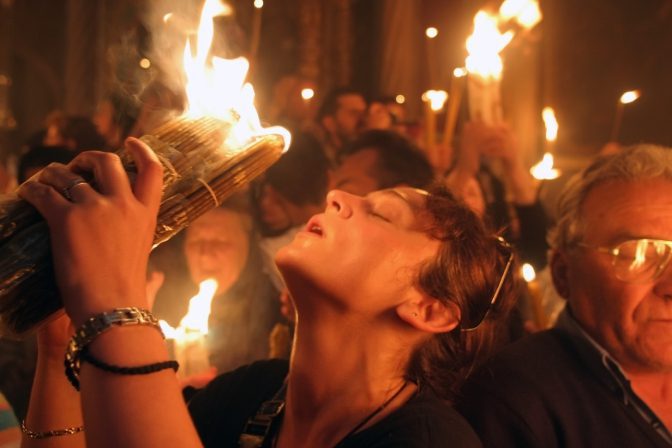
Architectural Marvels:
Furthermore, the Church of the Holy Sepulchre is a testament to the interplay of different architectural styles across centuries. Moreover, its towering domes, ornate chapels, and grand entrances mirror the layers of history and the contributions of various epochs—from Byzantine to Crusader to Ottoman.
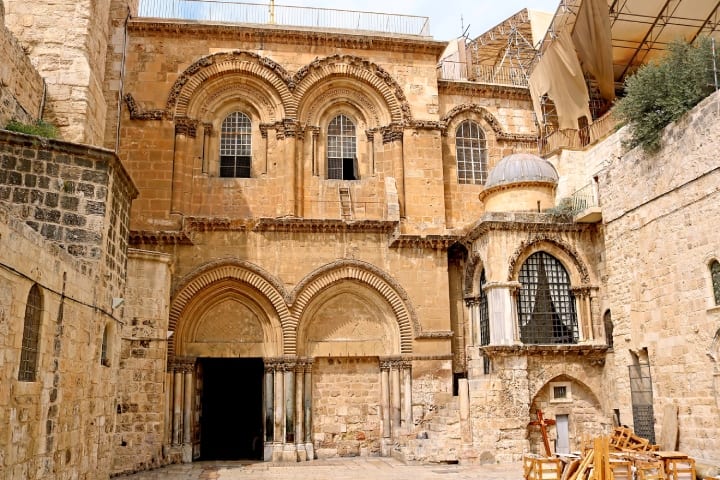
Let’s explore the distinct sections that comprise this remarkable sanctuary of faith.
Church of the Holy Sepulchre – Calvary (Golgotha):
Upon entering the church, visitors are met with a sense of reverence at the site believed to be Calvary, the hill where Jesus was crucified. This section holds the Chapel of the Crucifixion, where pilgrims can pay homage to this pivotal moment in Christian history. A simple yet poignant altar marks the spot, inviting reflection on the sacrificial journey of Christ.
Calvary
Stone of Anointing:
Adjacent to Calvary is the Stone of Anointing, where tradition holds that the body of Jesus was prepared for burial. This place of solemnity is commemorated with lamps, icons, and fragrant offerings that honor the anointing ritual.
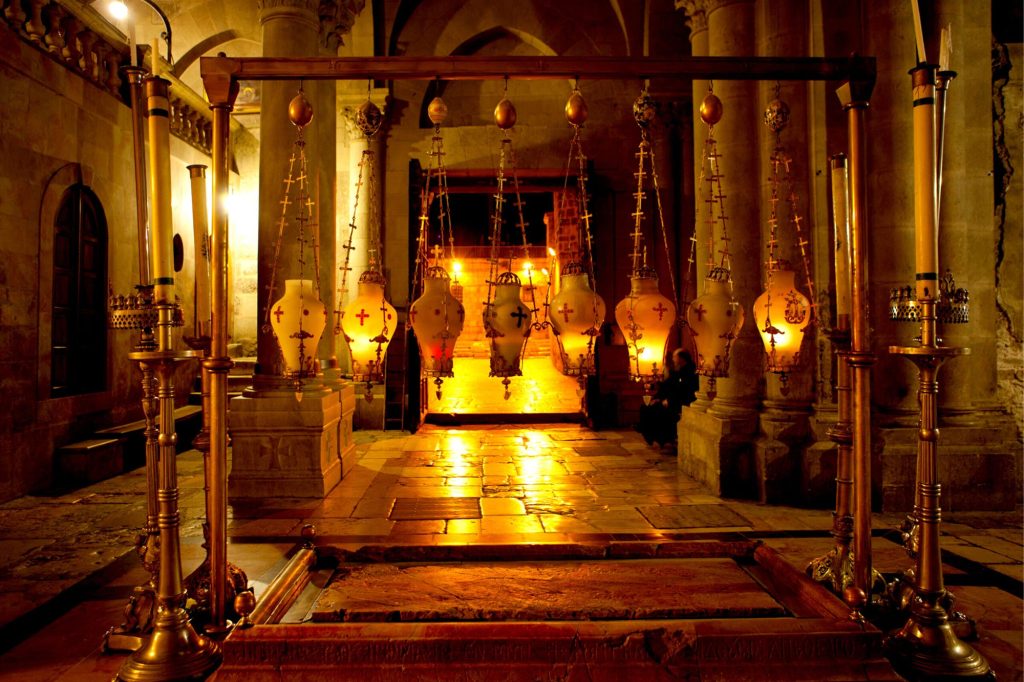
Edicule of the Holy Sepulchre:
At the heart of the church lies the Edicule, a small structure that encloses the Holy Sepulchre—the tomb where Jesus is believed to have been buried and later resurrected. Various Christian denominations share this section, each maintaining a deep connection to this sacred site.
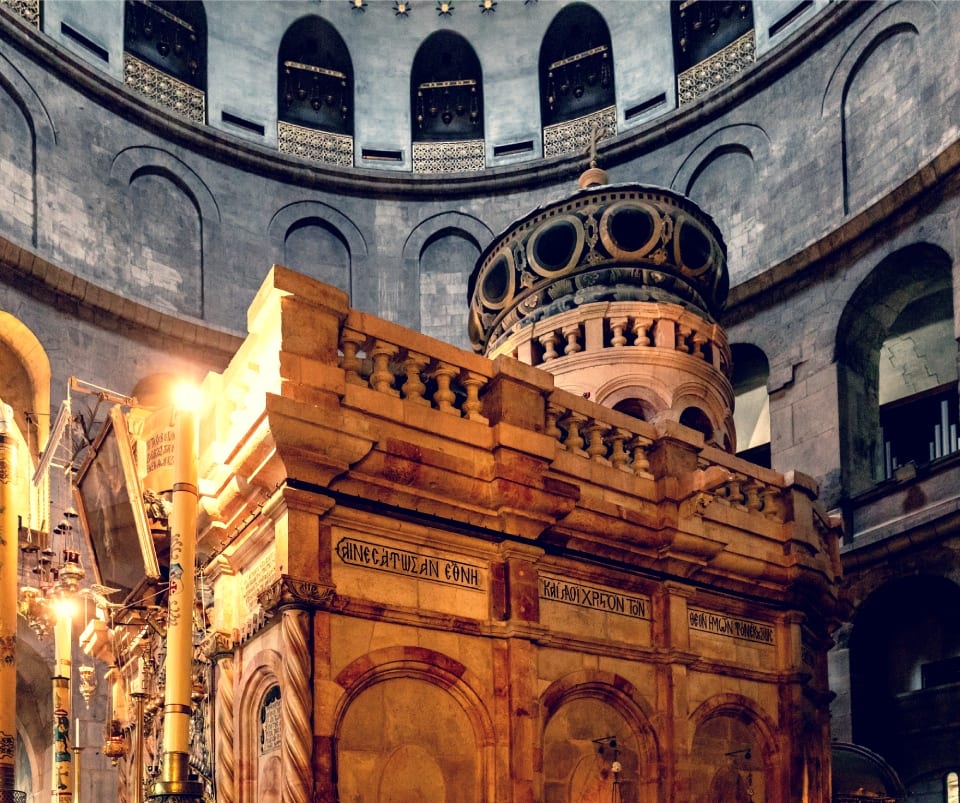
Church of the Holy Sepulchre – The Rotunda:
Surrounding the Edicule is the Rotunda, an expansive circular space adorned with ornate mosaics and lamps. It serves as a gathering point for pilgrims and visitors, offering a place for contemplation and prayer. The Rotunda symbolizes the eternal cycle of life and faith.

Catholicon (Greek Orthodox Area):
This section includes the main worship space for the Greek Orthodox community. It features a grand altar and intricately adorned chapels dedicated to various saints. The Catholicon is a vibrant testament to the rich Byzantine heritage that informs the church’s architecture and spirituality.
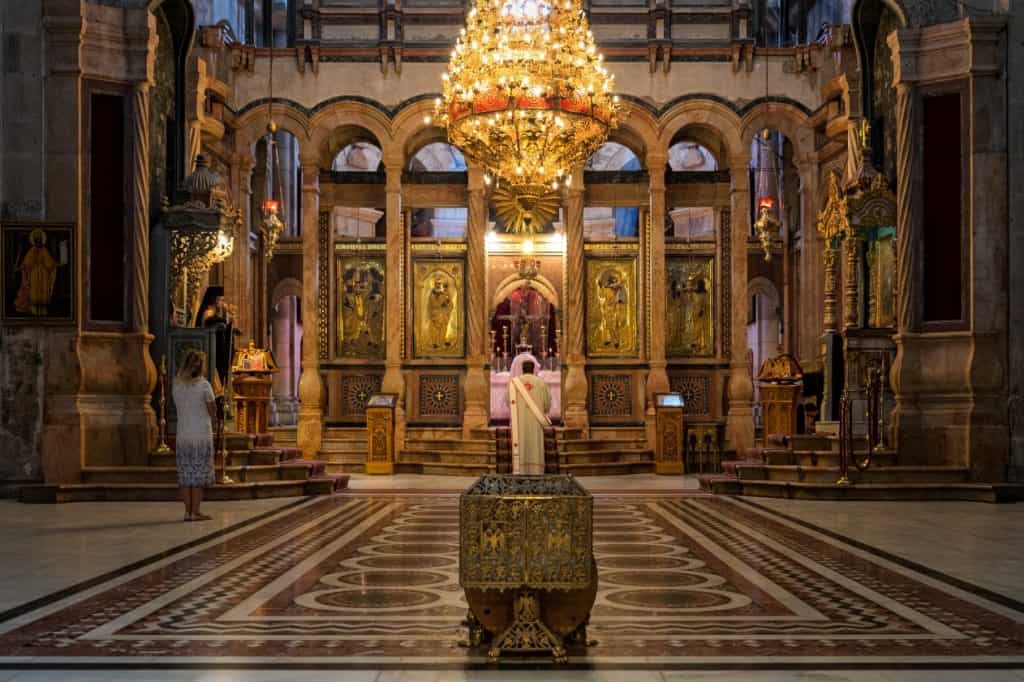
Chapel of Saint Helena:
Named after the revered figure who is said to have discovered the True Cross, the Chapel of Saint Helena is a tranquil oasis of devotion. Its artwork and adornments celebrate the life and contributions of this remarkable historical figure.
Chapel of Saint Helena
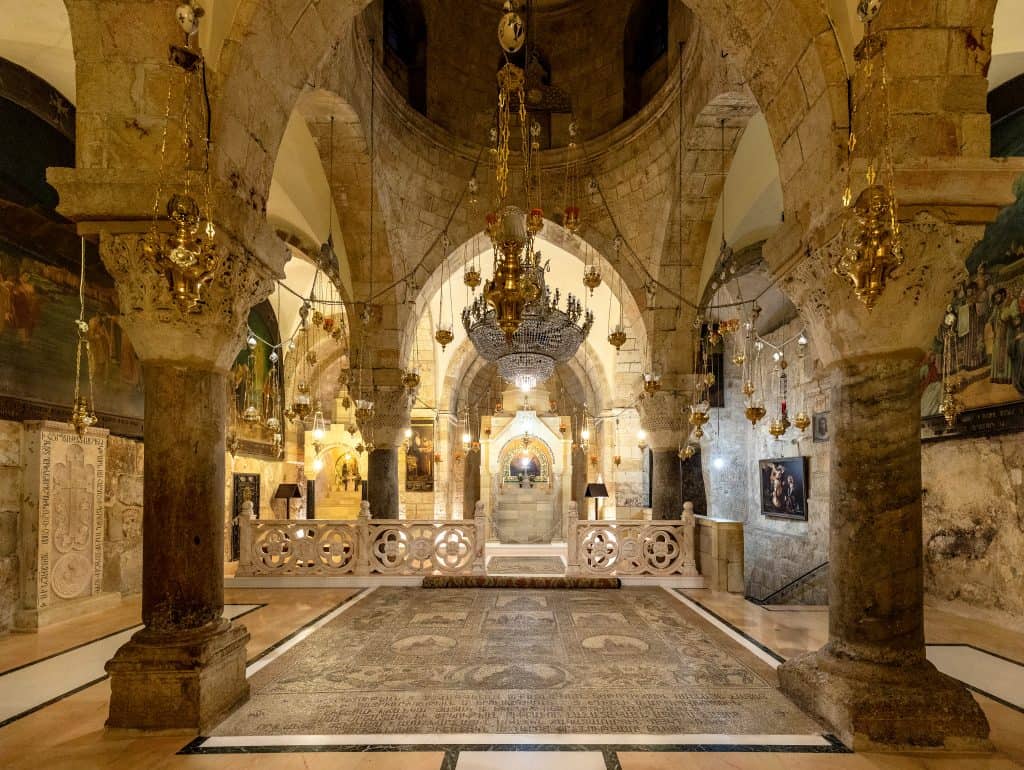
Church of the Holy Sepulchre – Archaeological Excavations
Beneath the revered halls and chapels of the Church of the Holy Sepulchre lies a hidden world—a labyrinth of history and spirituality brought to light through meticulous archaeological excavations.
The Excavations beneath the Rotunda:
One of the most remarkable archaeological finds was beneath the Rotunda, the circular space surrounding the Edicule. Here, explorations revealed remnants of earlier constructions, including portions of the original Constantinian basilica built by Emperor Constantine in the 4th century. These discoveries directly connect to the site’s early days of Christian worship.
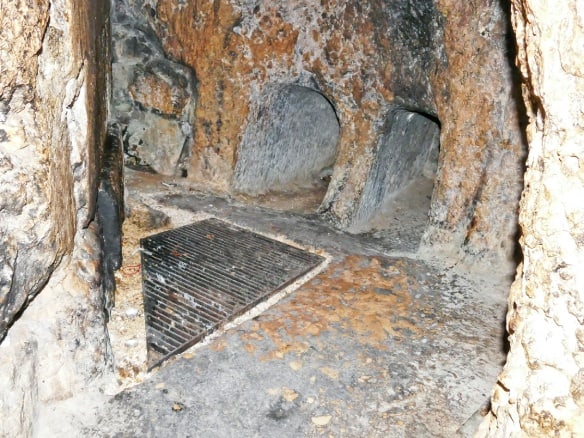
The Quarry of the Crucifixion:
So, one of the most intriguing finds was a quarry-like area beneath the Chapel of St. Helena. This area, often referred to as the “Quarry of the Crucifixion,” is believed to be the place where the rock was extracted to build the crucifixion site, Calvary. This discovery offers a tangible link to the physical elements of the crucifixion narrative.

Credit: Ranbar, CC BY-SA 4.0, via Wikimedia Commons
A Window into Pilgrimage Practices:
So, the archaeological investigations also shed light on pilgrims’ practices throughout history. The presence of graffiti, inscriptions, and offerings etched into the walls by pilgrims from various eras reflects their deep reverence and the enduring significance of the church as a pilgrimage destination.

